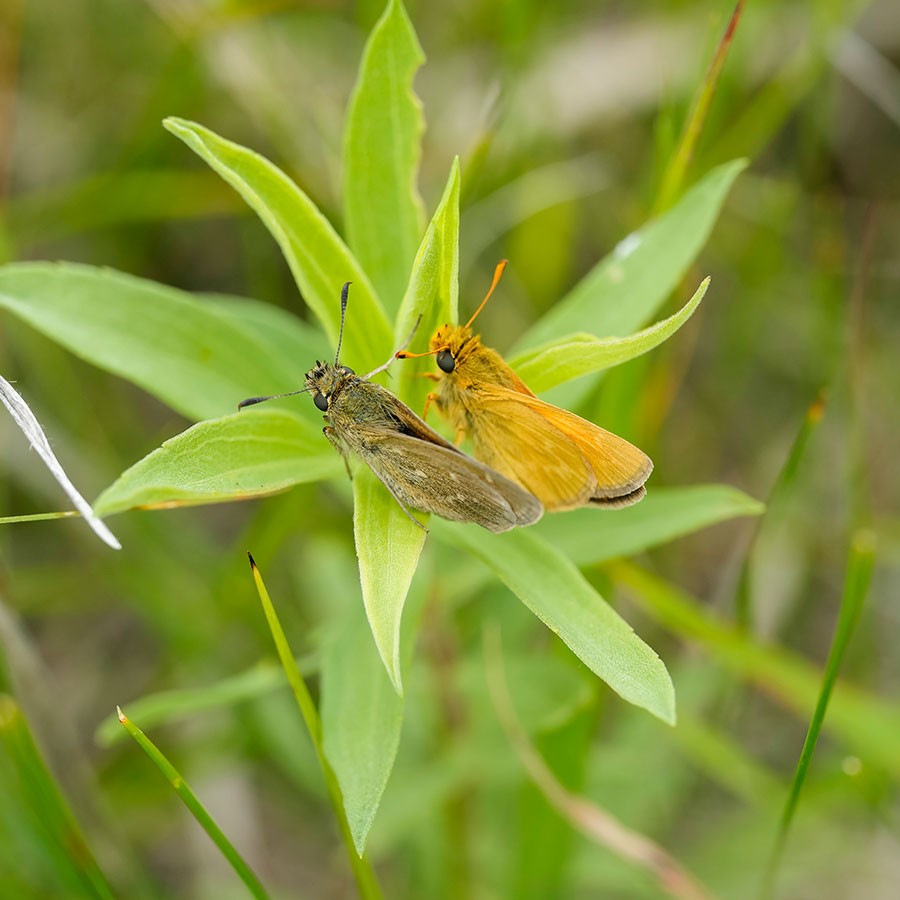We’re wandering slowly across a good-looking chunk of prairie somewhere in McHenry County, eyes trained mostly at ground-level and higher where the native grasses and wildflowers bend in the breeze.
There are eight of us from state and federal conservation agencies, all searching for the same thing on this piece of public land. To passersby, it might appear that we’re looking for something of value. Maybe vehicle keys that fell out of an unzipped backpack or perhaps an iPhone that slipped from a back pocket.
They’d be correct because we are combing nearly 500 acres managed by the of Department of Trust Lands for something of significance — a small and difficult to identify butterfly with a wingspan of about an inch — and seemingly harder to find than lost keys.
The rub, of course, is that there aren’t nearly as many Dakota skippers as there once were. Listed as threatened under the Endangered Species Act more than a decade ago, the species declined alongside the conversion and degradation of prairie habitat in the state and elsewhere that the butterfly needs to survive.
The other thing working against us this morning are cool temperatures and overcast skies that keep the skippers hidden where you typically can’t see them. We’re told to hope for the sun to break through the clouds to get the butterflies moving so the experts in the group can positively identify what we’re in search of.
I was shown cellphone photos and images in a guidebook of male and female Dakota skippers before we set out, but I understand if I flush or spot anything small and brownish, I’ll need to lean heavily on the insect whizzes for guidance.
I also understand that no matter how small or nondescript, I really, really want to see this threatened species that has simply blinked out in some historical strongholds but still has a toehold in parts of North Dakota where remnants of quality native prairie habitat still exist.
While our pace, a relaxed zigzag that splits the team the farther we take measured steps across the landscape, there is a sense of urgency because the window to happen upon adult Dakota skippers is narrow. Following the life stages of egg, larva and pupa, the adults live for only about three weeks before taking their last flight and fertilizing the prairie.
I learn quickly that I’m walking too fast compared to the others, and I’m likely viewing this ageless ecosystem all wrong. As a hunter, I gravitate to those areas where I’d expect to flush sharp-tailed grouse in fall. My eyes wander too often to the forested habitat bordering the trust land waiting for a white-tailed doe and young to step out and feed.
I finally slow and get into the rhythm of things and start seeing what I was missing — a mostly-unknown-to-me collection of wildflowers that provide the nectar, the go-juice the adult skippers need to fuel their short lives during the mating season. I learn by pestering the person closest to me that that’s a black-eyed Susan and that’s a prairie lily … and on it goes.
The morning is warming now, and the sun periodically peeks through parted clouds and the skippers emerge from their hidey holes. The professionals, those individuals who annually survey as many native prairie sites as possible in North Dakota to see the true extent of the species, exude shared excitement.
They approach spotted skippers as if walking on eggshells so the butterflies don’t flush from the vibration caused by heavy boot falls. They photograph confirmed Dakota skippers and snap images of those that need further examination on computer screens back in the office.
While I read in preparation for this outing that mating between Dakota skippers typically occurs the first day the female emerges, witnessing this act in nature, I figured, was a longshot.
I was right about it being a longshot.
The most veteran in our crew, the skipper whisperer who has been surveying Dakota skippers for about a decade and calls the privilege of doing so a gift, says he has witnessed the act just two times.
Today, right now somewhere in McHenry County, he can make it three.
Tired from navigating the prairie for a couple hours, but with a skip in our steps, we meet back at our parked vehicles and discuss what needs to be done to keep this threatened species from disappearing. The consensus is that we need to keep ranchers on North Dakota’s landscape and safeguard the native prairie that remains.
Considering that we’ve lost more than 70% of our native prairie over time, the latter seems like a tough task, but so did finding a small butterfly this morning with just an inch-long wingspread in a sea of grass.


